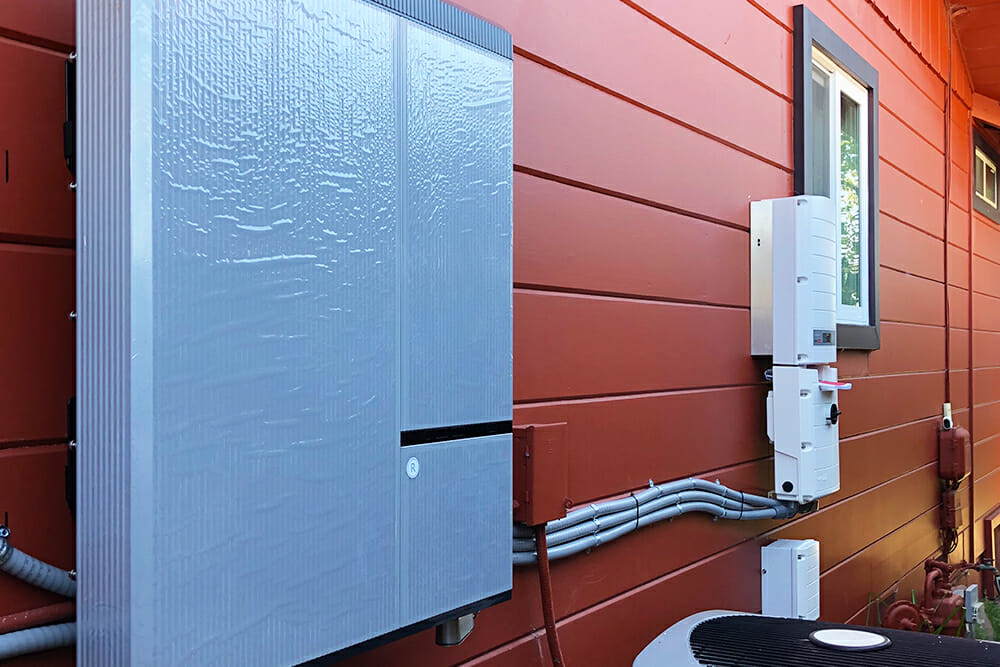If you’re considering solar, you’re likely weighing the various options that come with a new system, including the potential for saving money on your electric bill. Many municipal utility companies offer solar owners the option to send excess solar energy to the power grid and draw energy from the power grid when energy demand is high. This arrangement is known as net energy metering (NEM), and it is a proven way for homeowners and business owners to maximize their ability to cut energy costs.
Understanding how net metering works will allow you to make an informed solar system purchase, and set you up for money saving in the future.
What is solar net energy metering?
Net metering is an incentive system that allows solar power system owners to “sell” excess energy produced by their systems back to the power grid. Solar energy generation depends on a number of factors: weather conditions, time of day, and seasonality. During the day, when the sun is shining, solar panels are at their most efficient. When it’s cloudy outside, solar panels generate less electricity, And at night, solar panels create no electricity at all.
During peak production hours, solar panels produce more energy than your home or business can use. During these times, you are powered entirely by solar, and aren’t having to pay anything to your utility company.
But in the evening, your solar power system doesn’t produce any energy at all, and unless you have a solar battery system, you’ll have to rely entirely on energy generated by your utility company—right when time-of-use rates are at their highest. This can seriously hinder your ability to use solar to reduce your energy costs.
This is where net energy metering proves very useful. When your solar panels produce more electricity than your home or business requires, you can send that excess energy to the power grid, for which you receive credits on your electricity bill.
Then during the evening or on cloudy days when you need more energy than your solar panels generate, the credits you previously earned will be applied against the energy you draw from the power grid. You’ll only be charged for your “net” energy consumption.
Net metering allows solar owners to significantly reduce their energy bills by putting energy into the grid—essentially putting it into a figurative energy savings account—and then tapping into the energy credits they have earned when they have to rely on the grid.
Net energy metering allows you to only pay the difference between the energy you source from the power grid, and the power you put back into it.
Your net energy consumption is the difference between the amount of energy you use from the power grid, and the amount of energy your system generates for the grid. This determines the final amount you’re billed for on your monthly utility bill.
Grid-tied and hybrid solar systems come equipped with a two-way meter that tracks energy usage. Typically, energy usage is the highest in the morning and in the evening. But, solar energy production is highest during the middle of the day when the sun is out. Net metering, and your two-way energy meter, allows you to account for both the energy you consume, and the energy you produce.
Your monthly energy bill will represent the amount of energy you generate with your solar system, versus the amount of energy you use from the power grid. When your home or business produces more energy than you use, and you send that excess energy to the power grid, you will receive a credit for the kilowatt-hours you gave to the grid (minus fees which are deducted by the utility company to help cover the cost of maintaining the grid and other infrastructure). In effect, you’re charged in reverse: the utility company owes you. This credit balance is settled by applying it against what you owe for the energy you sourced from the grid.
In the long run, NEM is a proven way to save money on electric bills.
Net energy metering eligibility differs by state.
Eligibility depends on your home’s or business’s local utility company. It is best to check the specific requirements for your state and utility company, to determine how to set up net energy metering.
In both California and Nevada, solar system owners are eligible to enjoy the benefits of net metering.
According to Go Solar California, any California electric utility customer that generates electricity through solar energy (with a system that has a peak capacity output of less than 1,000 kW) can participate in net energy metering. Solar system owners must apply and receive approval from their local utility company to connect with the power grid. For more information, and to check the policy of your municipal utility, check out California’s Public Utilities Commission’s net energy metering page.

Nevada residences are also eligible for net metering, though the program is different from California. Nevada’s Public Utility Commission’s net energy program is tiered. First-time NEM enrollees earn a credit equal to 95% of the electricity retail rate. Once your solar system produces 80 megawatts, or after 20 years, you are bumped down to tier two. At tier two you earn a credit equal to 88% of the retail rate. The average home requires about 9,000 kWh of energy per year, so you won’t be moved down to tier two for roughly 10 years.
Other states have different net energy metering policies. You can use the Database of State Incentives for Renewables and Efficiency (DSIRE) to learn if your state offers a net metering program.
If you’re in the market for solar and considering the benefits of net energy metering, Ilum Solar representatives can help you figure out the next steps. We’re experts in installing residential and commercial solar systems, and know the best ways to make the most of your solar power system and help you save money





